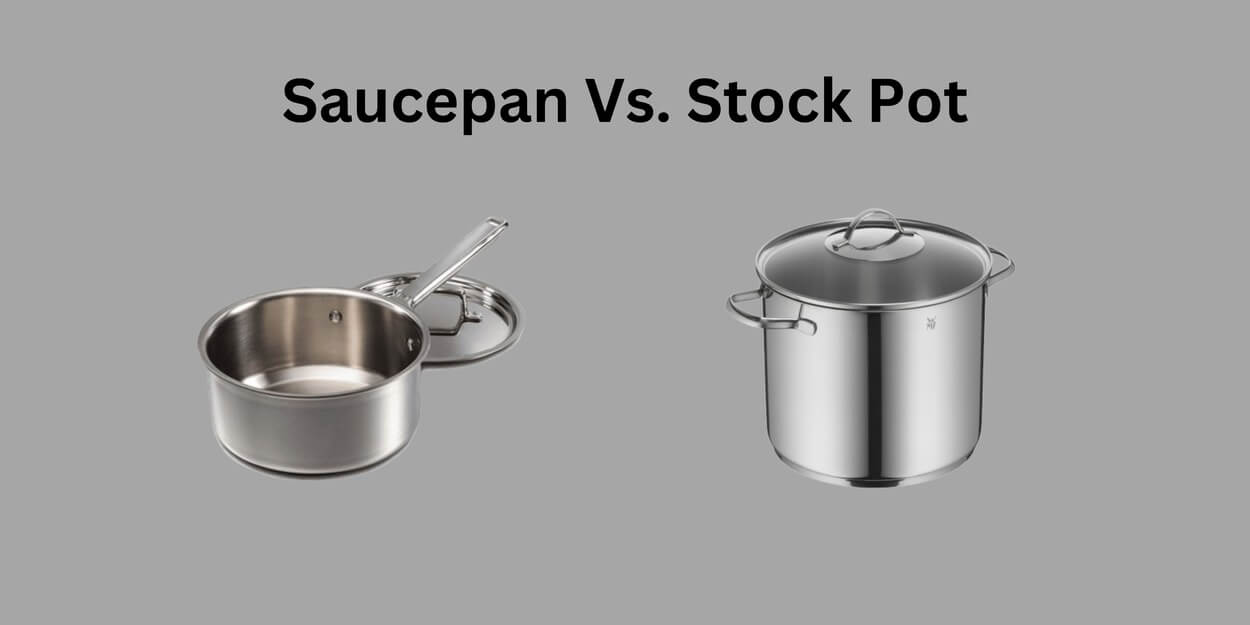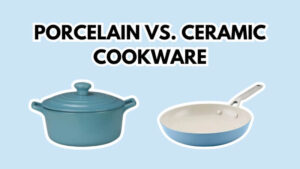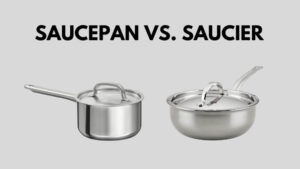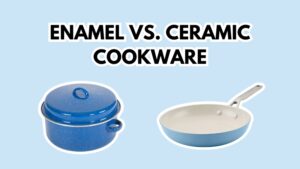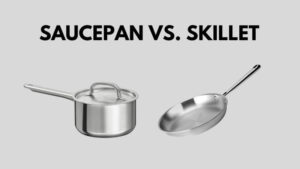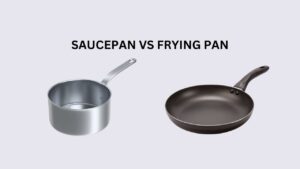If you’re serious about cooking, choosing the right cookware is essential. While some kitchen tools have distinct purposes, others, like saucepan vs stock pot, appear to overlap in function. Both are used for liquid-based cooking, but they have key differences in size, material, and usage that affect their performance.
This guide explores the key differences between a saucepan and a stock pot, their ideal uses, and how to choose the right cookware for your kitchen.
What is a Saucepan?
A saucepan is a deep, narrow pan with a long handle and often a lid. It has straight or slightly flared sides and a flat bottom, making it ideal for liquid-based cooking.
This cookware is best suited for preparing sauces, boiling water, cooking grains, and making small portions of soup. Its size typically ranges from one to ten quarts, with three to four quarts being ideal for home cooking.
Typical sizes:
- Small: 1 – 2 quarts (ideal for single servings)
- Medium: 3 – 4 quarts (best for family cooking)
- Large: 5 – 10 quarts (for bulk cooking)
Saucepans are commonly made from stainless steel, aluminum, or materials with a nonstick coating. Stainless steel is durable and resistant to rust, aluminum heats up quickly, and nonstick-coated saucepans make cleaning easier.
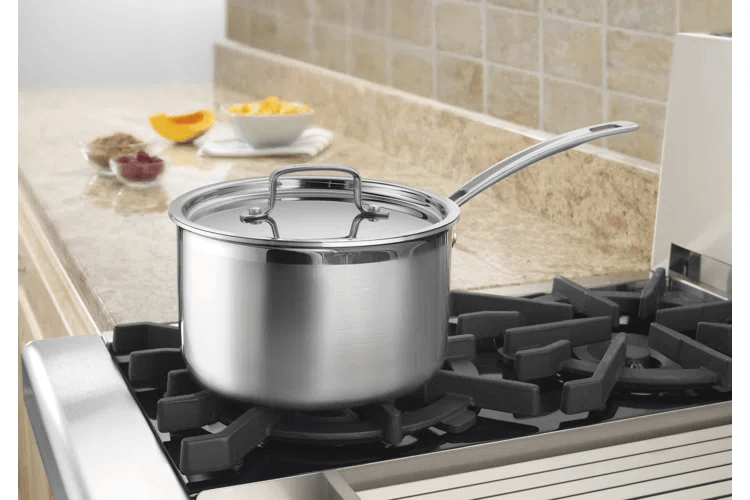
What is a Stock Pot?
A stock pot is a large, deep pot with two looped handles and a flat bottom, designed for simmering stocks, boiling pasta, or batch cooking. Home-use stock pots typically range from 6 to 32 quarts, while commercial models can hold up to 120 quarts. They are commonly made from stainless steel, enameled cast iron, or aluminum.
Saucepans are commonly made from stainless steel, aluminum, or materials with a nonstick coating. Stainless steel is durable and resistant to rust, aluminum heats up quickly, and nonstick-coated saucepans make cleaning easier.
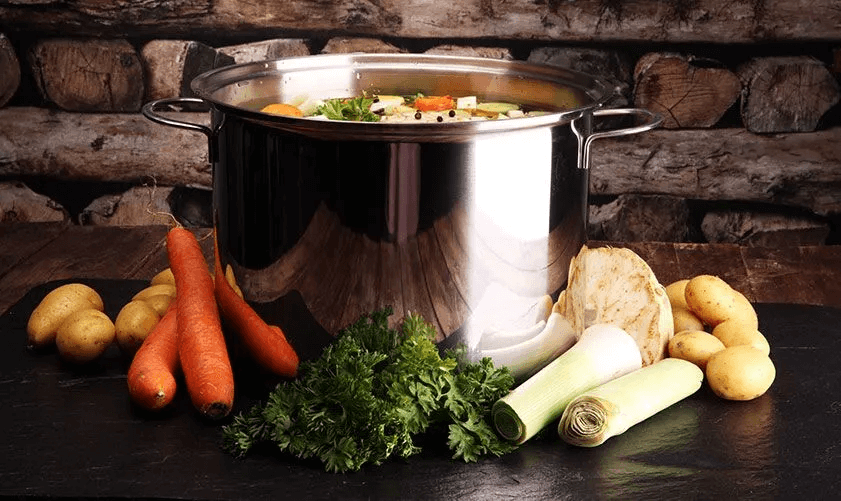
Key Differences Between Saucepan vs Stock Pot
| Feature | Saucepan | Stock Pot |
|---|---|---|
| Size | 1 – 10 quarts | 6 – 32+ quarts |
| Shape | Deep with one handle | Tall with two looped handles |
| Best for | Sauces, boiling, poaching | Soups, stews, batch cooking |
Size
Stock pots are much bigger than saucepans. In fact, they’re likely the biggest cookware in your kitchen. For home use, stock pot sizes range from 6 to 32 quarts, whereas those in a commercial setting can be up to 120 quarts.
Most saucepans can hold 1 to 4 quarts of food, although some can be as big as 10 quarts to serve large crowds. If you’re buying a saucepan for family use, a pan between 3 and 4 quarts will be enough.
Material
Saucepans are usually made from aluminum, stainless steel, or aluminum cast in stainless steel. Stock pots are typically made from stainless steel, enameled cast iron, or anodized aluminum. The durability of your cookware will depend on its material, but stock pots are normally the sturdier ones.
Neither type of cookware typically has a nonstick surface, it’s still easier to find a nonstick saucepan. This is because these kitchenwares mostly cook liquid, so it’s not likely that you’ll have food stuck to your pots and pans.
Handle types
A common pan and saucepan will always come with a long handle to make it easier to lift the cookware on and off the stovetop. Some larger saucepans may also have an additional looped handle for more support.
Stockpots will always have two looped handles to distribute the weight evenly, so you can pick up the large pot even when it’s full.
Read more: Saucepan vs Saucepot: Everything You Need to Know
Should You Own Both?
I’d suggest having both saucepans and stock pots so you won’t limit yourself in the kitchen. For starters, having both types of cookware allows for cooking multiple dishes simultaneously. Plus, you won’t have to adjust recipes to make them suit your cookware.
Choosing one cookware over the other may also mean you can’t cook certain dishes. For instance, a saucepan is normally not large enough to cook stews, so you’ll have to scratch that dish off your list. Meanwhile, a stock pot is too huge for sauces or poaching eggs, unless you’re cooking for a big crowd.
If choosing only one, consider your cooking habits. A saucepan is best for daily meal preparation and small portions, while a stock pot is ideal for those who frequently cook in large batches, regardless of household size.
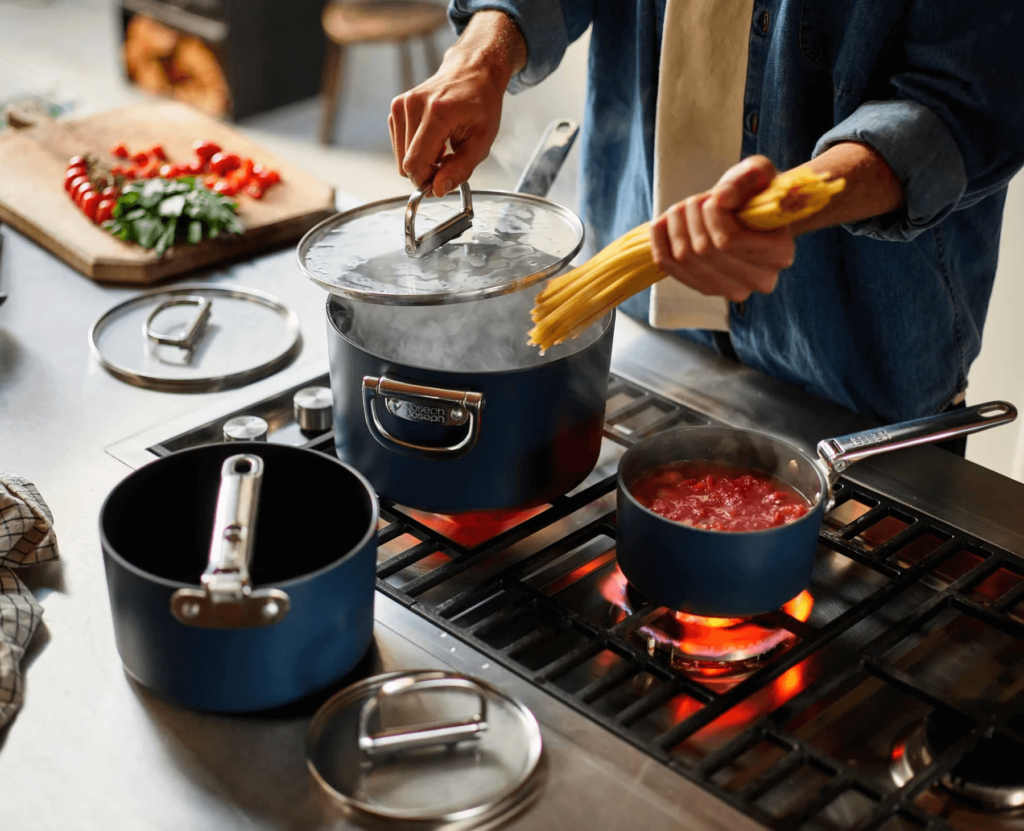
How to Clean and Maintain Your Cookware?
To prevent scratches, avoid metal utensils on saucepans and stock pots, especially if they have a nonstick coating. High heat can cause warping or scorching, so always monitor temperature levels while cooking.
Remember how I mentioned most saucepans and stock pots don’t have a nonstick surface? This is why you’ll want to constantly stir your food if you’re preparing a thick sauce or cooking pasta.
I also suggest cleaning your cookware by hand using warm water, a soft sponge, and dish soap without harsh detergents. Leaving the hard work to dishwashers may be tempting, but it may damage your pots and pans and reduce their lifespan.
So what if you encounter a stubborn stain or stuck on food? One method that always works for me is pouring baking soda into the cookware and scrubbing the surface with a lemon slice. For a more stubborn stain, I often boil a mixture of vinegar and water in the pan/pot while scraping away the burned food with a wooden spatula.
I cannot stress enough that you shouldn’t put a hot pan/pot into cold water. The heat shock will damage your cookware. And when you put your saucepan or stock pot away, remember to completely dry it first.
Recommended Foods for Each of Them
Saucepans
A saucepan’s small size and even heat distribution make it an excellent choice for preparing sauces or small portions of soup. The cookware is often my first choice whenever I need to boil water, poach eggs, or cook pasta because it’s quick and convenient.
Although I prefer to cook rice and quinoa in a rice cooker, I’ve found that saucepans can do the job quite well too. This will require you to pay close attention to the pan to avoid burning the food, but the result is worth it.
I understand saucepans can seem ideal for searing or browning food, but you may have it confused with a skillet. No matter how similar these two cookwares may look, note that the main difference between saucepan vs skillet is that the former is for dealing with liquid, while the latter is for searing, browning, and frying food.
Stock pots
Stock pots are best for making stocks, broth, stews, and soup. Their sizes are often large enough to steam large cuts of meat, veggies, an entire lobster, and many other foods. These pots are also very helpful whenever I need to boil enough pasta and noodles for an entire crowd.
Since I don’t have a deep fryer at home, I often use a stock pot for deep frying. Why? Because its tall sides can accommodate a large volume of oil while also keeping the oil from splattering outside.
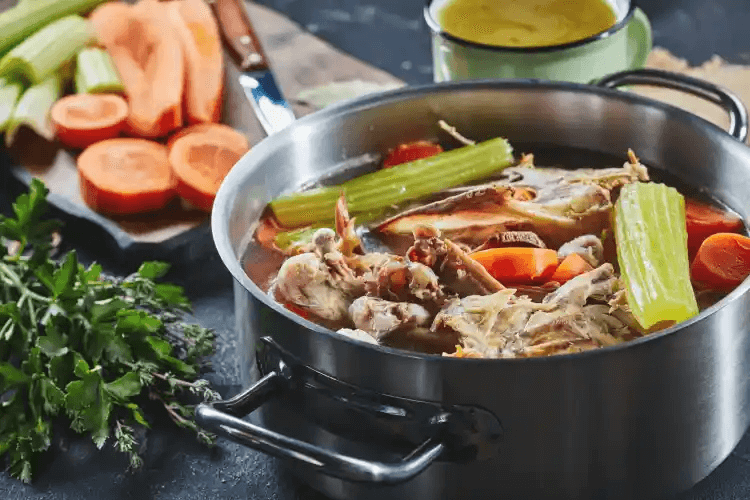
Final Thought
In short, both saucepans and stock pots are necessary for your kitchen. When cooking for myself, making sauces, or reheating food, a saucepan would be my first choice. However, I also love the flexibility that a stock pot can offer, as I don’t have to limit my recipes or food quantity when cooking with it.
I hope my comparison has helped you tell the differences between a saucepan vs stock pot.

